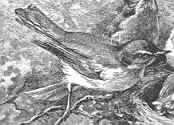Here are my speculations about the Last Supper:
The meal would have been preceded by a blessing over the bread and followed by a grace-after-meal. The first I assert on the basis of Acts 27.35 and 1 Corinthians 11.24, the second on the basis of 1 Corinthians 11.25 ("after supper") Sirach 33.13, and Jubilees 22.6. These two elements would have been present whether the Last Supper was a Passover meal or not. The precise words of these prayers are not known, though one can make guesses about the subject-matter based on the texts just cited and later witnesses, such as the Didache.
If one accepts that the Last Supper was a Passover meal, then it is possible that there were two additional elements: First, the Egyptian Hallel, Psalms 113-118. Philo (Special Laws 2.148) tells us that the Passover meal included "prayers and hymns". The grace provides the prayers. The psalms are good candidates for the hymns. Another element that might have been present is the blessing over the wine before the meal, in later times called kiddush. This is suggested by Luke 22.17, which also suggests one kiddush by the symposiarchos, rather than each banqueter saying his own blessing.
It is not certain where the Hallel would have been in relation to the other elements. Matthew 26.30 suggest the hymn came after the grace-after-meal, and the standard procedures of a hellenistic symposium, as I understand them, would suggest the same.
My hunch is that the matzoth eaten at a Passover meal in those days were not the stiff, dry crackers now used, but flexible, like a flour tortilla. The Passover lamb would have been roasted on a spit (Exodus 12.8, reflecting early posexilic practice). The banqueters would hold out the unleavened bread with one hand and would cut off chunks of lamb into it using a knife held in the other, at some point adding the bitter herbs--I would guess green onions or leeks for these--wrapping the whole, and eating it in the manner of a Greek gyro. The notion of eating no cheese with meat was (so I understand) just beginning to get traction in those days, and there is no evidence that Jesus followed it, so cheese could be available also.
Rich people, of course, would get their slaves to prepare the food for them. This could have been seen as technically against the law of the festival, (Leviticus 23.7), but was this law so interpreted, and if so, was it effectively enforced?
Whether the Last Supper was a Passover meal or not, the procedure might have been for the banqueters to begin in a lower room or courtyard (atrium) with bread and wine, then when everyone had arrived, move to another, possibly upper room (triclinium) where they would recline on couches for the main meal.
Tuesday, April 7, 2009
Subscribe to:
Post Comments (Atom)


No comments:
Post a Comment